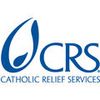By Bill O’Keefe
Before 2003, if you lived in a poor country, a diagnosis of HIV meant near certain death. Women suspected of carrying the virus were being driven from their communities, men were being shunned, children were being abandoned. Dying patients overwhelmed hospitals and exhausted doctors. The sick were resigned to what they understood as their fate. It was a terrifying time.
Nearly 15 years later, the terror of HIV and AIDS has turned into hope, and more than 11 million lives have been saved and improved throughout the developing world – thanks to PEPFAR, the President’s Emergency Plan for AIDS Relief created by president George W. Bush in 2003.
But on this World AIDS Day, let’s acknowledge that much remains to be done, particularly for children. Their access to life-saving medication has lagged far behind that of adults. And even if a child is not infected herself, HIV can still be devastating, wiping out a family’s finances, affecting every aspect of the household’s wellbeing.
Much of PEPFAR’s success is rooted in the inspiration it gave to public health and development experts, as well as Congress, who began to imagine that maybe we could take on the challenge of this pandemic, that maybe everybody didn’t have to die. And that’s what we did, and we need to do it again.
Years before PEPFAR came into existence, then Secretary of State Colin Powell had declared HIV as the US’ greatest national security threat. Post-9/11, this may seem strange, but at the time whole societies were on the verge of collapse because an entire generation in its most productive years – the people who were working, teaching, raising children, producing food— was dying off.
In the late 1990s, the price of anti-retroviral (ARV) treatment for HIV was $10,000 dollars per person, per year. Sadly, most assumed that would preclude saving lives in Africa. Some security experts questioned whether countries in Eastern and Southern Africa would even be viable.
Advocacy, research, and the leadership of many people drove the cost of treatment down to several hundred dollars per person per year. Quickly, public health and development experts began to imagine that maybe we could take on the challenge of this pandemic, that maybe everybody didn’t have to die.
I think that spark of imagination caught fire in the Bush administration, and with the President himself. The result was PEPFAR, one of the most inspiring acts by an American president in our history. Members of Congress serving at the time also demonstrated courage. Funding PEPFAR at that scale -- $15 billion over five years -- took a huge leap of faith as some were skeptical that people in resource-poor countries could manage complex prevention, care and treatment programs on a national, in fact, continental, scale.
Those early days were tough. Many millions of people in very rural areas around the world weren't receiving any kind of healthcare, much less the sophisticated drug treatment regimens required to successfully treat a disease like HIV. Health workers needed training, supply chains needed to function, people living with HIV and AIDS needed support to take their medication, and communities needed to address the stigma that kept transmission hidden.
Once PEPFAR gathered momentum, the treatment provided became a critical driver for preventing the spread of the disease. Without the fear that you are going to die no matter what, you have an incentive to get tested, get treated and live your life. This was the circle of protection that began to take hold.
While much has been achieved, there are still an estimated 16.6 million children worldwide who have been orphaned due to the pandemic, and millions more are vulnerable because of it. Children who are born with HIV often have trouble getting the nutrition they need not just to grow up healthy, but also to fight off the disease. Even if they are HIV free, children born into families with HIV, or into communities severely impacted by HIV, can have trouble getting an education and the nurturing social and psychosocial support that they need to grow up as healthy adults. They require continued support from a range of services to reduce their harm from HIV.
Congress set aside 10 percent of PEPFAR funding for orphans and vulnerable children as part of the original bill that authorized PEPFAR and our U.S. contribution to the Global Fund to Fight AIDS, TB and Malaria. Congress retained this set-aside in each subsequent reauthorization. In 2016, our nation supported 6.2 million orphans and vulnerable children with that money, but this is the only pot of money worldwide dedicated to mitigating the impact of HIV on children. More is needed.
We are proud to be a part of what we hope will be a breakthrough effort to ensure that the successes of PEPFAR are passed down to the next generation of children growing up in a world still affected by HIV and AIDS.
Bill O’Keefe is Vice President for Advocacy at Catholic Relief Services, the official overseas humanitarian agency of the Catholic Church in the United States.
